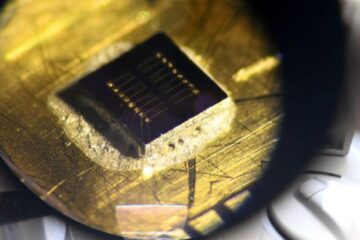New York Stem Cell Foundation scientist grows bone from human embryonic stem cells

The study is the first example of using bone cell progenitors derived from human embryonic stem cells to grow compact bone tissue in quantities large enough to repair centimeter-sized defects. When implanted in mice and studied over time, the implanted bone tissue supported blood vessel ingrowth, and continued development of normal bone structure, without demonstrating any incidence of tumor growth.
Dr. Marolt's work is a significant step forward in using pluripotent stem cells to repair and replace bone tissue in patients. Bone replacement therapies are relevant in treating patients with a variety of conditions, including wounded military personnel, patients with birth defects, or patients who have suffered other traumatic injury.
Since conducting this work as proof of principle at Columbia University, Dr. Marolt has continued to build upon this research as an Investigator in the NYSCF Laboratory, developing bone grafts from induced pluripotent stem (iPS) cells. iPS cells are similar to embryonic stem cells in that they can also give rise to nearly any type of cell in the body, but iPS cells are produced from adult cells and as such are individualized to each patient. By using iPS cells rather than embryonic stem cells to engineer tissue, Dr. Marolt hopes to develop personalized bone grafts that will avoid immune rejection and other implant complications.
The New York Stem Cell Foundation has supported Dr. Marolt's research throughout her career, first through a NYSCF – Druckenmiller Fellowship to fund her post-doctoral work at Columbia University, and now with a NYSCF – Helmsley Investigator Award at The New York Stem Cell Foundation Laboratory. “The continuity of funding provided by NYSCF has allowed me to continue my research uninterrupted, making progress more quickly than would have otherwise been possible,” Dr. Marolt said.
The New York Stem Cell Foundation (NYSCF) conducts cutting-edge translational stem cell research in its laboratory in New York City and supports research by stem cell scientists at other leading institutions around the world. More information is available at www.nyscf.org.
Media Contact
More Information:
http://www.nyscf.orgAll latest news from the category: Life Sciences and Chemistry
Articles and reports from the Life Sciences and chemistry area deal with applied and basic research into modern biology, chemistry and human medicine.
Valuable information can be found on a range of life sciences fields including bacteriology, biochemistry, bionics, bioinformatics, biophysics, biotechnology, genetics, geobotany, human biology, marine biology, microbiology, molecular biology, cellular biology, zoology, bioinorganic chemistry, microchemistry and environmental chemistry.
Newest articles

Sea slugs inspire highly stretchable biomedical sensor
USC Viterbi School of Engineering researcher Hangbo Zhao presents findings on highly stretchable and customizable microneedles for application in fields including neuroscience, tissue engineering, and wearable bioelectronics. The revolution in…

Twisting and binding matter waves with photons in a cavity
Precisely measuring the energy states of individual atoms has been a historical challenge for physicists due to atomic recoil. When an atom interacts with a photon, the atom “recoils” in…

Nanotubes, nanoparticles, and antibodies detect tiny amounts of fentanyl
New sensor is six orders of magnitude more sensitive than the next best thing. A research team at Pitt led by Alexander Star, a chemistry professor in the Kenneth P. Dietrich…





















